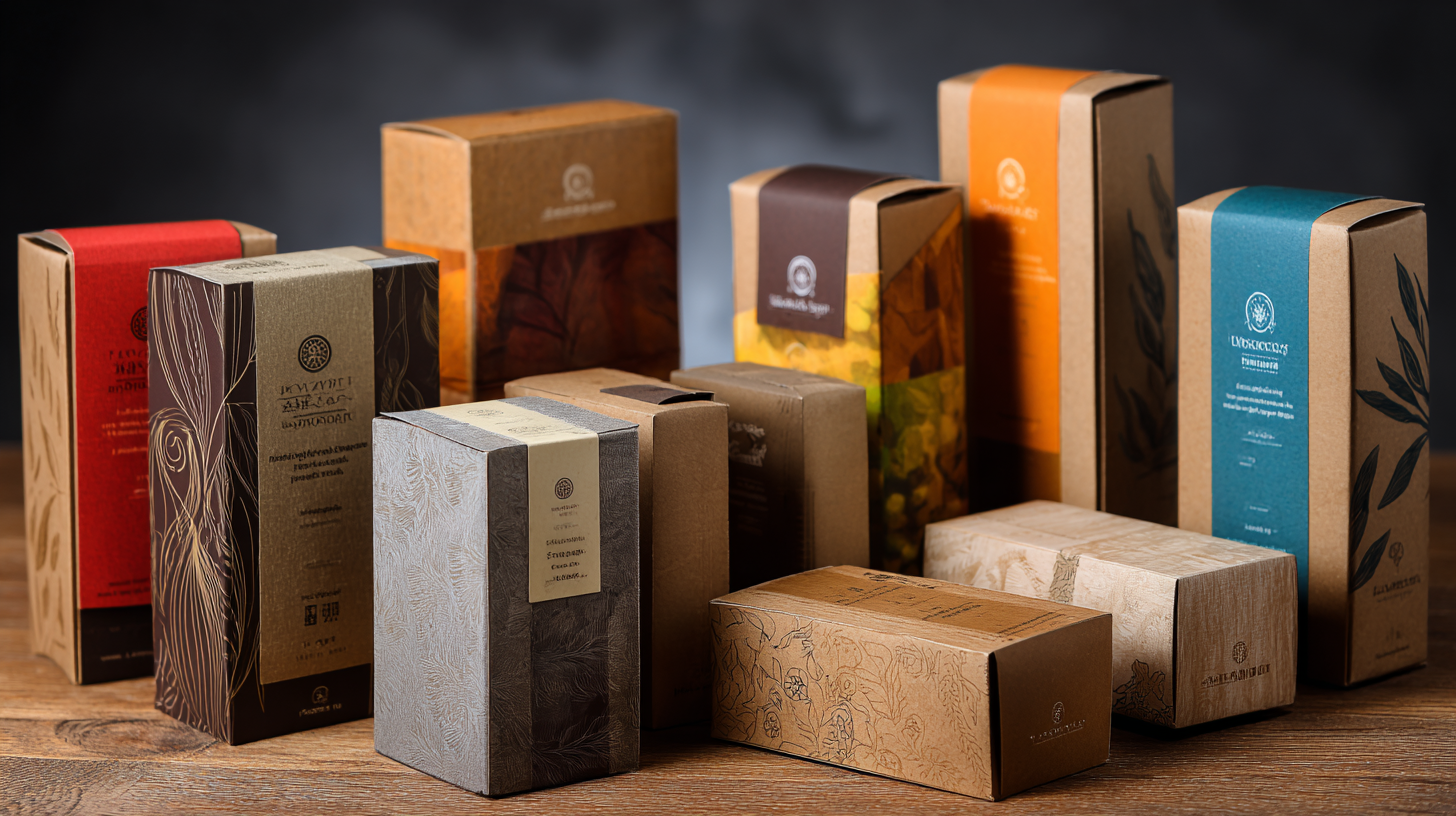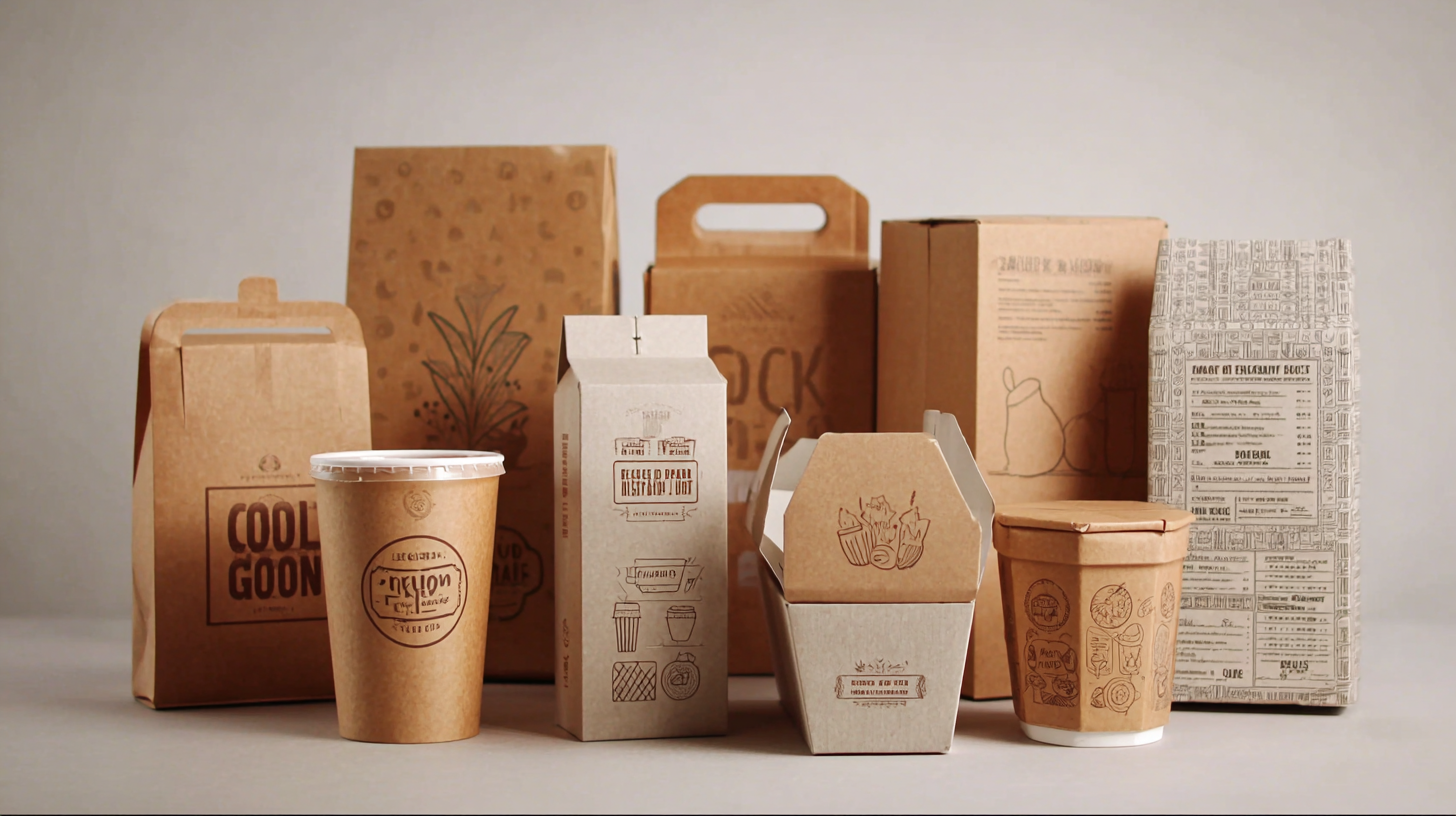Leave Your Message
In today's fast-evolving culinary landscape, the importance of innovative food packaging solutions cannot be overstated, especially when it comes to selecting the right "Boxes for Food Packaging." According to a recent industry report by MarketsandMarkets, the global food packaging market is projected to reach USD 500 billion by 2025, driven by the increasing demand for convenience and sustainable packaging options. As restaurants and food producers strive to enhance brand visibility while ensuring food safety, the right packaging becomes paramount. This ultimate guide will explore effective strategies for identifying high-quality suppliers of food packaging, along with showcasing diverse box designs that cater to various culinary uses. By understanding the key trends and leveraging professional insights, businesses can make informed decisions that not only protect their products but also elevate their brand appeal in a competitive market.

In the rapidly evolving food industry, aesthetic appeal in packaging has become a crucial factor in consumer decision-making. According to a recent market analysis by Smithers Pira, the global market for food packaging is projected to reach over $400 billion by 2025, with a growing emphasis on design innovation. Creative design elements are no longer merely supplemental; they actively shape the consumer's perception of quality and freshness. Packaging that features vibrant colors, intricate patterns, and unique structural designs can significantly enhance visual appeal, drawing consumers' eyes and compelling them to choose one product over another.
Moreover, the integration of sustainable materials and smart packaging technologies is reshaping the landscape of food packaging design. A report by Grand View Research highlights that the sustainable food packaging market is expected to grow at a CAGR of 5.7% from 2021 to 2028. Brands are increasingly prioritizing eco-friendly options that not only look attractive but also resonate with environmentally conscious consumers. Incorporating elements such as biodegradable materials, minimalistic designs, and interactive features can enhance the overall consumer experience, making food packaging a vital part of brand identity and marketing strategy. By presenting an aesthetically pleasing product, companies can effectively engage and retain customers in a crowded marketplace.
In today’s conscious consumer landscape, sustainability in food packaging has emerged as a crucial consideration for both businesses and individuals. The desire to reduce environmental impact drives the demand for eco-friendly options that do not compromise on functionality or aesthetics. Innovative materials like biodegradable plastics, compostable containers, and recycled paper are becoming commonplace, appealing to modern consumers who prioritize sustainability in their purchasing decisions.
Moreover, brands are now exploring various packaging designs that not only protect the food within but also enhance the dining experience. For instance, reusable boxes made from sustainable materials can serve multiple purposes, reducing waste and promoting a circular economy. These thoughtful solutions align with the values of eco-aware consumers who seek products that reflect their commitment to the planet. As businesses innovate in their packaging strategies, they contribute to a more sustainable future while also accommodating the diverse culinary uses that drive culinary arts today.
In the rapidly evolving food industry, innovative packaging solutions are paramount for preserving freshness and ensuring safety. According to a report by Smithers Pira, the global market for food packaging is expected to rise to $480 billion by 2024, underscoring the critical role of advanced materials in maintaining food quality. Effective packaging not only protects food from contamination and spoilage but also extends shelf life, thereby reducing food waste. For instance, vacuum-sealed packaging can extend the freshness of meats and dairy products by several weeks.
**Tip:** When selecting food packaging, consider materials that provide barriers to moisture and oxygen. For example, multi-layer films can inhibit the growth of harmful bacteria while preserving the original flavor and texture of the food.
Furthermore, contemporary packaging designs are increasingly focusing on user convenience while ensuring safety. Smart packaging technologies, such as QR codes and freshness indicators, have gained traction, allowing consumers to make informed decisions about food safety. According to research published by MarketsandMarkets, the smart packaging market is projected to reach $37 billion by 2024, reflecting a growing demand for transparency and traceability in the food supply chain.
**Tip:** Always choose packaging that highlights its safety features, such as BPA-free plastics or recyclable materials, which not only protect food but also support sustainable practices in the food industry.
| Packaging Type | Materials Used | Functional Benefits | Best Uses | Eco-Friendliness |
|---|---|---|---|---|
| Biodegradable Containers | PLA, Paper, Cornstarch | Compostable, Reduces Waste | Salads, Takeout Meals | High |
| Vacuum Sealed Bags | Plastic, Aluminum Foil | Prolongs Shelf Life, Prevents Spoilage | Meats, Cheeses, Frozen Foods | Medium |
| Recyclable Paper Boxes | Kraft Paper, Cardboard | Lightweight, Protects from Damage | Baked Goods, Snacks | High |
| Glass Jars | Glass | Non-Toxic, Reusable | Preserves Sauces, Pickles | High |
| Foil Pouches | Aluminum, Plastic | Barrier Protection, Lightweight | Snack Foods, Seasonings | Medium |
Innovative materials in food packaging are transforming the culinary landscape, enhancing both food safety and consumer experience. According to a recent report by Smithers Pira, the global food packaging market is expected to reach $500 billion by 2024, driven by the demand for sustainable and functional packaging solutions.
 Advanced materials such as biodegradable plastics and smart packaging are leading this revolution. These innovations not only prolong shelf life but also improve food preservation by utilizing technologies that can monitor freshness or indicate spoilage, thus reducing food waste significantly.
Advanced materials such as biodegradable plastics and smart packaging are leading this revolution. These innovations not only prolong shelf life but also improve food preservation by utilizing technologies that can monitor freshness or indicate spoilage, thus reducing food waste significantly.
When selecting packaging materials, consider environmental impact. Opt for biodegradable options like PLA (Polylactic Acid) for a greener choice that decomposes effectively without leaving harmful residues. Additionally, look for packaging that incorporates oxygen scavengers to preserve flavor and extend product life, which can enhance customer satisfaction. Always check for certifications of sustainability—products that are compostable or recyclable are becoming increasingly favored by eco-conscious consumers.
Lastly, design plays a crucial role in culinary packaging. Ensure that your packaging is not only functional but visually appealing. Eye-catching designs can elevate the dining experience and attract more customers, as studies show that attractive packaging can increase perceived value. By combining innovative materials with thoughtful design, culinary businesses can elevate their offerings and meet modern consumer demands.
In the ever-evolving world of culinary arts, the importance of versatile food packaging solutions cannot be overstated. Multi-purpose food packaging offers endless possibilities, catering to diverse culinary applications—from takeaway meals to gourmet gifts. Innovative designs not only enhance freshness but also elevate the presentation of dishes, making them more appealing to consumers.

One key tip for selecting the right packaging is to consider the material. Eco-friendly options like biodegradable boxes or reusable containers are not only sustainable but also attract environmentally conscious customers. Additionally, look for packaging that provides insulation and moisture control, which is crucial for maintaining the quality of hot or cold foods during transport.
Another important aspect is customization. Many packaging solutions now allow for personalized branding or unique designs. This is an excellent way to make your culinary creations stand out in a crowded market. Remember to choose packaging that reflects your brand’s identity while also being practical for various food types, ensuring that it meets the needs of different culinary applications.
